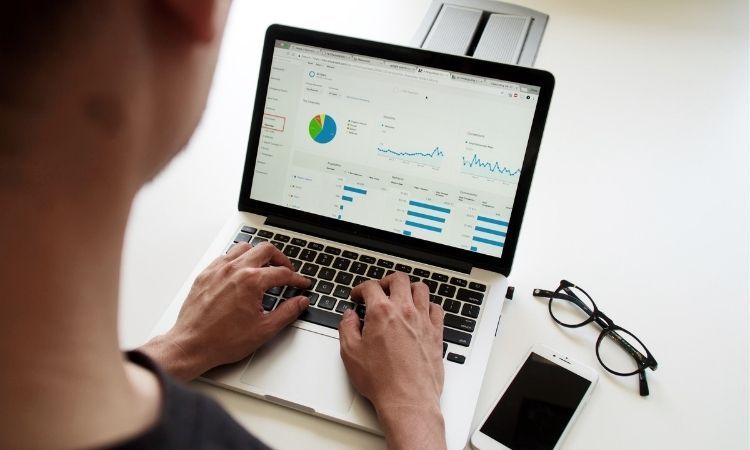Defending against cybercrime is a challenging task. Cybercriminals are always discovering new attack methods, so security professionals have to continually adapt and stay vigilant. Predictive analytics can make that a lot easier.
Predictive analytics in cybersecurity could help companies with limited security staff stay safe from sophisticated attacks. Here’s a closer look at how it works and how it could help defend against cybercriminals.
What Is Predictive Modeling?
First, what is predictive modeling? It’s a subset of data analytics that uses statistics to help determine what could happen in the future. Analysts take past and current data to make a model of how things could go in the future, tailoring it as new data emerges.
In many cases, people run several models at once and combine the results to find the most likely outcome. If you’ve used a weather app, you’ve experienced this kind of predictive modeling firsthand. The process has potential far beyond predicting whether it’s going to rain, though.
Predictive analytics has become standard practice in industries like banking and marketing. As cybercrime has grown, security professionals have also started to tap into its potential.
Determining Vulnerability
The first way predictive analytics can improve cybersecurity is by helping organizations understand their risks. Cybercrime is a threat to any business, but different companies will experience different types of attacks. Good security starts with knowing which of those attacks are the most threatening.
Predictive analytics models can compare a business’s security measures and cybercrime trends among similar companies. They can then show how cybercriminals may attack them and where the holes in their defenses are.
Human analysts could perform similar work, but artificial intelligence (AI) is often much better at these complex calculations. Some systems, such as QuadMetrics—explained here by the University of Michigan— have shown up to 90 percent accuracy and false-positive rates below 10 percent, highlighting their effectiveness.
Identifying Users by Their Behavior
Predictive analytics in cybersecurity also provides an innovative way of identifying users. It’s fairly easy to steal a password, but it’s unlikely that a hacker will use a computer the same way an authorized user does. Everyone has distinct usage habits that AI can learn, helping it discover potential breaches.
Analytics programs such as cybercrime security software, by companies like Kaseware, can review data to identify fraudulent patterns, raising a red flag when users break those patterns. This approach works the same way as fraud monitoring. Just as a bank may deactivate your credit card after an unusual purchase, these systems may restrict an account after atypical behavior.
When an account behaves differently than the AI predicted, human security professionals can look at it more closely. If it’s an attacker, they can stop it, and if it’s just the ordinary user, they can give them their permissions back.
Predicting Attacks Before They Happen
As these predictive analytics models improve, they could become even more helpful. They might predict cyberattacks before they happen, letting security workers prepare for the incoming attack.
Some networks have already started using basic versions of this kind of software. Machine learning models predict attacks by identifying malicious activity in other networks. They then determine whether similar attacks are likely in their own network. Cybercriminals can work around this by using decoy attacks, but combining it with other methods could be more effective.
Other systems analyze specific cybercriminals’ ability, motive, and opportunity to attack. Others scan for IP addresses connected to suspicious activity. Combining these factors can help models make more accurate predictions, catching cybercriminals before they can cause damage.
Fine-Tuning Cyber Insurance
Not all use cases of predictive analytics in cybersecurity revolve around stopping attackers. Since cybercrime is always evolving, no system can stop all possible attacks. Predictive models can still help by improving companies’ cyber insurance for when a breach does happen.
Data breaches are expensive, costing $4.24 million on average, and that cost keeps climbing. The cyber insurance industry has grown in response, helping businesses make up for any expenses that might occur during a breach. Predictive analytics can help work out what level of coverage a company might need by predicting how likely various attacks are.
All types of insurance measure risk to determine a party’s rates and the type of coverage they need. Cyber insurance is no different, but understanding the various relevant risk factors can be complicated, so it’s best to leave it to AI. Predictive models can reliably predict a business’s strengths and weaknesses, getting the best insurance deal for both parties.
Predictive Analytics Has Vast Potential in Cybersecurity
Predictive analytics in cybersecurity is a new concept, but its potential is impressive. These AI models can fill in the gaps where human abilities fall short, helping businesses stay as safe as possible. While no predictive model is perfect, they can provide substantial improvements over traditional solutions.
As the technology improves, people will find even more uses for predictive analytics in cyber security. Cybercriminals will adapt and these AI programs will likewise evolve to meet them. They may not eliminate cybercrime, but they could tip the scale in favor of innocent parties.




